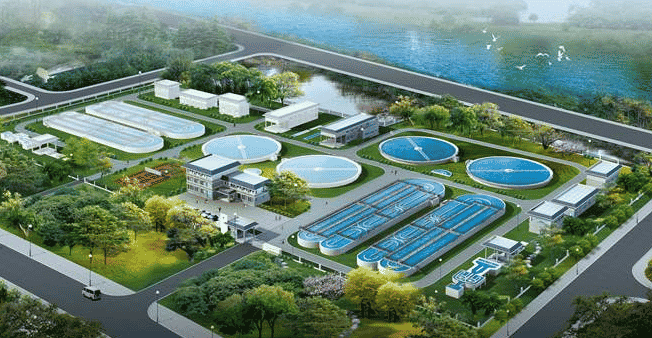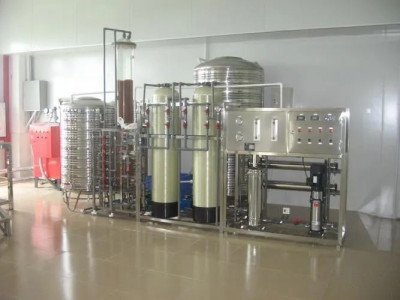Water is an essential element for human survival, and it is crucial that its quality is maintained at all times. With rapid urbanization, the demand for clean water has increased exponentially, and municipalities have a significant role to play in ensuring that their residents have access to safe drinking water. Providing clean water requires a comprehensive approach that includes sourcing, treatment, storage, and distribution. Therefore, this article will discuss the importance of water treatment for municipal purposes and explore various techniques used in water treatment plants to ensure that the water supplied meets the required standards. We will delve into the benefits of treating water before distribution, as well as some of the challenges faced by municipalities in their quest to provide safe drinking water.
June 26, 2023

Importance of Water Treatment in Municipal Areas
Water treatment is an essential process that helps to ensure that the water supplied to the public is safe and healthy for consumption. Municipal water treatment plays a crucial role in providing clean, drinkable water to the citizens of a city or town.
Why is Water Treatment Important?
Without proper water treatment, drinking contaminated water can lead to various diseases such as cholera, typhoid, dysentery, and other water-borne illnesses. These diseases are caused by harmful microorganisms like bacteria, viruses, and parasites that thrive in untreated water sources.
The purpose of municipal water treatment is to remove these harmful contaminants from the water supply before it reaches households, schools, hospitals, and other public areas. It ensures that the public has access to clean and safe drinking water.
What is Municipal Water Treatment?
Municipal water treatment refers to the process of treating raw or natural water from a local source such as a river or lake. This includes removing impurities like algae, sediment, and other organic materials. The treated water is then disinfected using chemicals such as chlorine or ozone to eliminate any remaining microorganisms.
Municipal Water Treatment Processes
Municipal water treatment is the process of making water safe to drink and use in municipal areas. The main purpose of municipal water treatment is to remove harmful contaminants and bacteria from the water before it reaches homes, businesses, and other public places. Municipal water treatment plants are responsible for providing clean drinking water to the public.
The water treatment process at a municipal plant involves several stages that work together to purify the water. These stages include coagulation, sedimentation, filtration, disinfection, and finally distribution.
Coagulation is the first stage of the water treatment plant process. In this stage, chemicals are added to the raw water to help suspended particles stick together and form larger particles called floc. The next stage is sedimentation where floc settles at the bottom of a tank allowing clean water to rise above it.
Filtration removes any remaining suspended particles in the water using sand or charcoal filters. After filtration, disinfection takes place where chemicals such as chlorine or ozone are added to kill harmful microorganisms that could cause diseases.
Finally, once treated and disinfected, purified water is pumped through pipes for drinking water treatment or any other uses in residential or commercial areas.
There are two types of water treatment plants used in municipal areas: surface water treatment plants and groundwater treatment plants. Surface water treatment plants take their source from lakes or rivers while groundwater treatment plants draw their supply from underground aquifers.
It is essential to keep water treatment equipment well-maintained for efficient performance for prolonged periods. Periodic maintenance schedules should be carried out regularly as per manufacturer’s guidelines for optimum performance of equipment used in municipal water treatment facilities.
Types of Water Treatment Plants in Municipal Areas
Municipalities are responsible for providing clean and safe drinking water to the public. One way to ensure that the water is safe for consumption is by implementing water treatment plants in municipal areas. There are different types of water treatment plants that can be used, depending on the source of the water and what contaminants need to be removed.
The most common type of water treatment plant used in municipal areas is a surface water treatment plant. This type of plant is designed to treat surface water from sources such as lakes, rivers, and reservoirs. The surface water goes through several stages of treatment before it’s considered safe for consumption, which includes:
Coagulation and Flocculation: Chemicals are added to the water to help particles clump together (flocculate), making it easier to remove them.
Sedimentation: The clumped particles settle down at the bottom of a tank.
Filtration: The remaining impurities in the water are filtered out using sand or other materials.
Disinfection: A disinfectant such as chlorine or ultraviolet light is added to kill any remaining bacteria or viruses.
Another type of municipal water treatment plant is a groundwater treatment plant. Groundwater comes from wells drilled into underground aquifers. This type of plant uses similar processes as surface water plants but may require additional steps if there are certain minerals present in the groundwater that need to be removed.
In addition, there are also specialized plants such as desalination plants, which treat seawater and turn it into drinking water by removing salt and other impurities.
Once a municipal water treatment equipment has been installed, it’s important to regularly maintain and manage it properly. This includes monitoring the quality of incoming water, testing treated water samples and checking equipment for wear or damage.
Despite the importance of water treatment in municipal areas, there are challenges that can arise. These include budget constraints, aging infrastructure, and natural disasters such as floods or droughts that can affect the quality of source water. However, by investing in proper maintenance and regularly upgrading equipment, municipalities can continue to provide clean and safe drinking water to their communities.
Maintenance and Management of Water Treatment Facilities
Maintaining and managing water treatment plants is crucial to ensure the delivery of safe drinking water to the public. These facilities require regular upkeep and monitoring to guarantee effective operation of the water treatment process.
The maintenance tasks for a drinking water treatment plant can be divided into two categories: preventive and corrective. Preventive maintenance includes activities that are performed regularly to prevent equipment failure, such as replacing filters or cleaning tanks. On the other hand, corrective maintenance refers to activities that are carried out in response to an issue or failure, like repairing a pump or fixing a leak.
Effective management is essential for ensuring that all plant operations run smoothly. This includes managing staff, tracking inventory levels of chemicals and equipment, maintaining records of water usage and quality, and complying with regulatory requirements.
Managing a water treatment plant process also involves addressing challenges such as aging infrastructure, changing regulations, and increasing demand for safe drinking water. To ensure compliance with regulations set by organizations such as the Environmental Protection Agency (EPA), operators must stay up-to-date with changes in laws and guidelines related to water treatment.
Another important aspect of plant management is maintaining proper training for staff members who operate equipment at the facility. Proper training ensures that all employees understand their responsibilities regarding safety procedures and effectively manage all aspects of water treatment equipment.
Challenges in Municipal Water Treatment
Municipal water treatment is an essential process that ensures the provision of safe and clean drinking water to communities. However, it comes with various challenges that need to be addressed to maintain the quality of water.
Inadequate Funding: One of the biggest challenges for municipal water treatment is inadequate funding. The cost of running a water treatment plant can be high, and municipalities may not have enough resources to cover all expenses. This can lead to equipment failure or the inability to hire enough staff, which can result in subpar treatment processes.
Contaminants in Raw Water Sources: Another challenge is dealing with contaminants in raw water sources. Different types of pollutants such as pesticides, chemicals, and industrial waste can find their way into rivers and lakes where municipalities source their water. Municipalities must invest in advanced water treatment equipment that can remove these contaminants effectively.
Aging Infrastructure: Many municipalities have aging infrastructure that requires frequent repairs and maintenance. This can cause disruptions in the supply chain, leading to inadequate distribution of treated water. It also increases the risk of contamination due to old pipes leaching lead or other harmful substances into the water.
Stringent Regulations: The government has stringent regulations regarding drinking water quality, which puts pressure on municipal authorities to ensure compliance with these standards. Failure to comply with these regulations results in severe fines or penalties that affect the budget allocated for running the plant.
Lack of Trained Personnel: Finally, there may be a lack of trained personnel necessary for operating and maintaining water treatment plants effectively. Running a plant requires skilled operators who are familiar with different processes such as flocculation, coagulation, sedimentation, filtration, disinfection among others used during drinking water treatment. If there isn’t enough qualified personnel available,it then becomes difficult for effective operations.
Water treatment plants employ sophisticated technology to ensure that the water supplied meets stringent quality standards. Municipalities must also invest in regular maintenance and management of these facilities to keep them operating at optimal levels. By doing so, they can guarantee a consistent supply of high-quality drinking water to their citizens.
However, there are also challenges faced by municipalities in providing safe drinking water. Chief among these are aging infrastructure, population growth, climate change effects, and budget constraints. Despite these challenges, municipal authorities must continue to prioritize investing in water treatment facilities to provide clean and safe drinking water for all.
How to Choose the Right Pure Water Treatment Equipment for Your Needs?
November 10, 2025
How to Choose the Right Pure Water Treatment Equipment for Your Needs? (by ROAGUA – Professional Water Treatment Equipment Manufacturer, China)
Turn Muddy Water into Clean Water: ROAGUA Stainless Steel Ultrafiltration Water Purifier for Africa
November 5, 2025
Clean Water for Every Village – ROAGUA Stainless Steel Ultrafiltration Water Purifier Built for Africa’s Tough Water Conditions



